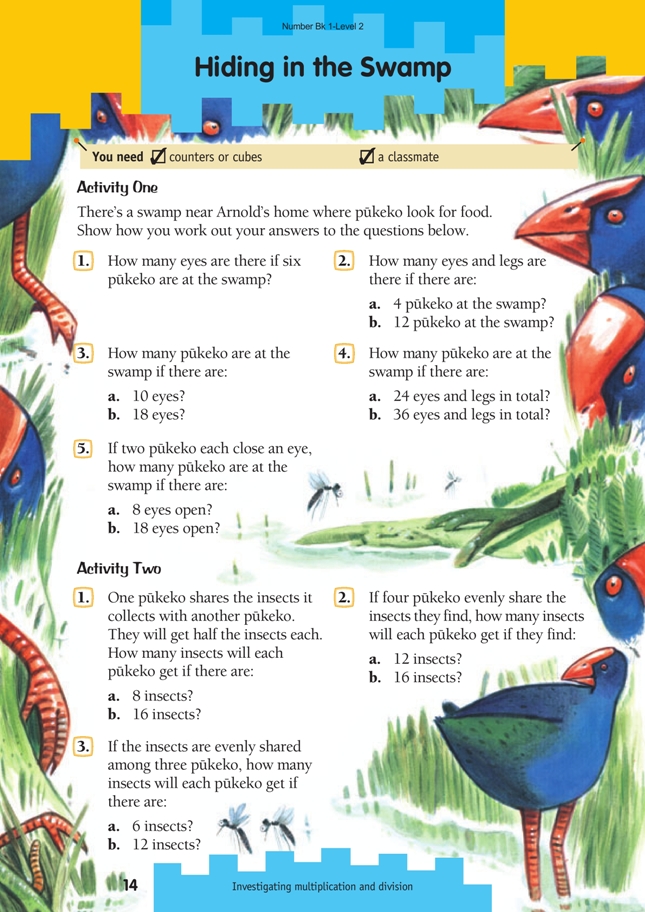This is a level 2 number activity from the Figure It Out series. It relates to Stage 5 of the Number Framework.
A PDF of the student activity is included.
Click on the image to enlarge it. Click again to close. Download PDF (268 KB)
explore multiplication and division using repeated addition, skip counting and sharing
FIO, Level 2, Number, Book 1, Hiding in the Swamp. page 14
classmate
The activities on this page involve finding the total of groups of the same number of objects and sharing objects evenly, that is, multiplication and division. Encourage the students to use their knowledge of multiplication to solve related division problems.
Activity One
The students can use the strategies they practised with Multiplying Madness and The Pig Pen (pages 12 and 13 respectively of the student’s book), that is, repeated addition, doubles, and skip-counting, to answer questions 1 and 2.
They could use the grouping or repeated subtraction approach to division to answer questions 3, 4, and 5, for example, 10 shared into twos might be thought of as:
“10 – 2 = 8, 8 – 2 = 6, 6 – 2 = 4, and 4 is two lots of 2, so that’s five lots of 2 altogether: five pūkeko are at the swamp.”
The students might also use a repeated addition strategy to see how many groups of 2 there are in 10.
To solve question 5, the students might take 2 from the starting numbers to account for the two one-eyed pūkeko, then work out how many lots of two eyes there are in what remains. Using the cubes or counters will help the students to solve these problems.
An extension exercise could be to look at the number of eyes and beaks.
Activity Two
These problems involve the sharing aspect of division, that is, eight insects shared by two pūkeko. To solve these problems, the students can act out the questions using multilink cubes or counters. For the example discussed here, they would give one “insect” to each “pūkeko”, then a second insect to each, then a third, and so on.
Answers to Activity
Activity One
1. 12 eyes (2 x 6 = 12)
2. a. 16 eyes and legs
b. 48 eyes and legs
3a. 5 pūkeko
b. 9 pūkeko
4. a. 6 pùkeko
b. 9 pūkeko
5. a. 5 pūkeko
b. 10 pūkeko
Activity Two
1. a. 4 insects
b. 8 insects
2. a. 3 insects
b. 4 insects
3a. 2 insects
b. 4 insects
